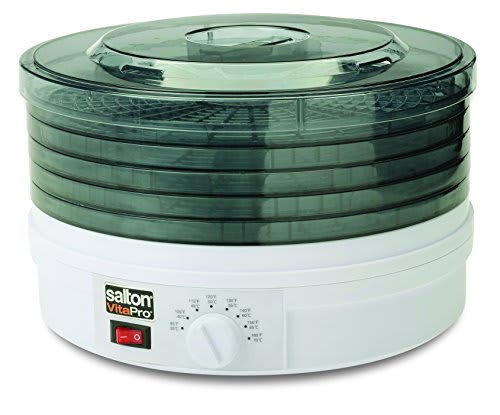Choosing a Fruit Or Vegetable Dehydrator

Want to dehydrate your favorite foods? There are numerous brands, types, and sizes out there today. The Best Foods Dehydrators in a Glance: . Do you want a food dehydrator to only experiment with dehydrating your food? Absolutely not! If you are looking for an appliance to occasionally make dried apricot chips or carrot slices, you can try to emulate their effects by drying them gradually on kitchen heating racks at low.
Of course, the best option is the stainless steel dehydrator. A stainless steel food dehydrator is among the most popular models on the market today. They come in a variety of sizes. There are single-port models, as well as larger two-port units. For example, the larger 2-port units can dehydrate up to three pounds of food.
One of the reasons why stainless steel dehydrators are so popular is because they are among the easiest to use and most user-friendly appliances one can find. These models usually have at least one heating element and often have two separate heating elements. The user can adjust the temperature of each element, depending on how dry the food they are dehydrating need to be. These are very user-friendly; in fact, some of these types of dehydrators are so easy to use that some people can actually use them without having to read the manual! That's something else that makes these types of food dehydrators so popular today.
Another reason why these dehydrators are so easy to use is that most of them come with at least one additional feature. Most of them come with trays or tins, which help to keep the food submerged while it sits in the dehydrator. Some of the newer models offer trays and tins that lock in the moisture; therefore, the food does not lose its heat while it sits in the dehydrator. This is yet another added advantage, and something that will definitely come in handy.
In addition to the above mentioned features, there are a couple of other features to look for in a good dehydrator. First off, the container bed should have room for at least three to five pieces of fruit or vegetables. The best choice is a wider tray so that the different pieces can be placed side-by-side. At the very least, the rectangular openings on the bottom of most containers should be about two inches wide. These openings provide a lot of room for slipping the fruit or vegetable trays into place and for maneuvering them around the pan.
Another useful feature to look for is the option to lock in moisture. Most fruit or vegetable dehydrators have channels along the bottom that run across the top of the tray to connect with the ventilation system inside the dehydrator. This allows the air to circulate underneath the lid, preventing the foods from drying out. This prevents spoilage, especially if the foods being dried are not refrigerated before being placed in the dehydrator.
The final feature that should be considered when purchasing dehydrators is whether the controls are easy to use. Good ones should have a long, smooth dial that is situated somewhere easy to reach. It should also have an easy-to-read monitor that shows current moisture levels and drying times. In addition, the timer function is extremely important. A good dehydrator should have an easily adjustable time and even be programmable, allowing users to set the time that the machine will complete the drying process.
These are the basic features of a good fruit or vegetable dehydrator. No matter what type of dehydrator you choose, be sure to take into consideration how well it will serve your specific purposes. For example, a small fruit dehydrator is ideal for using on smaller pieces of fruit. A large, full size dehydrator, on the other hand, is better suited to drying larger pieces of fruit and vegetables.




